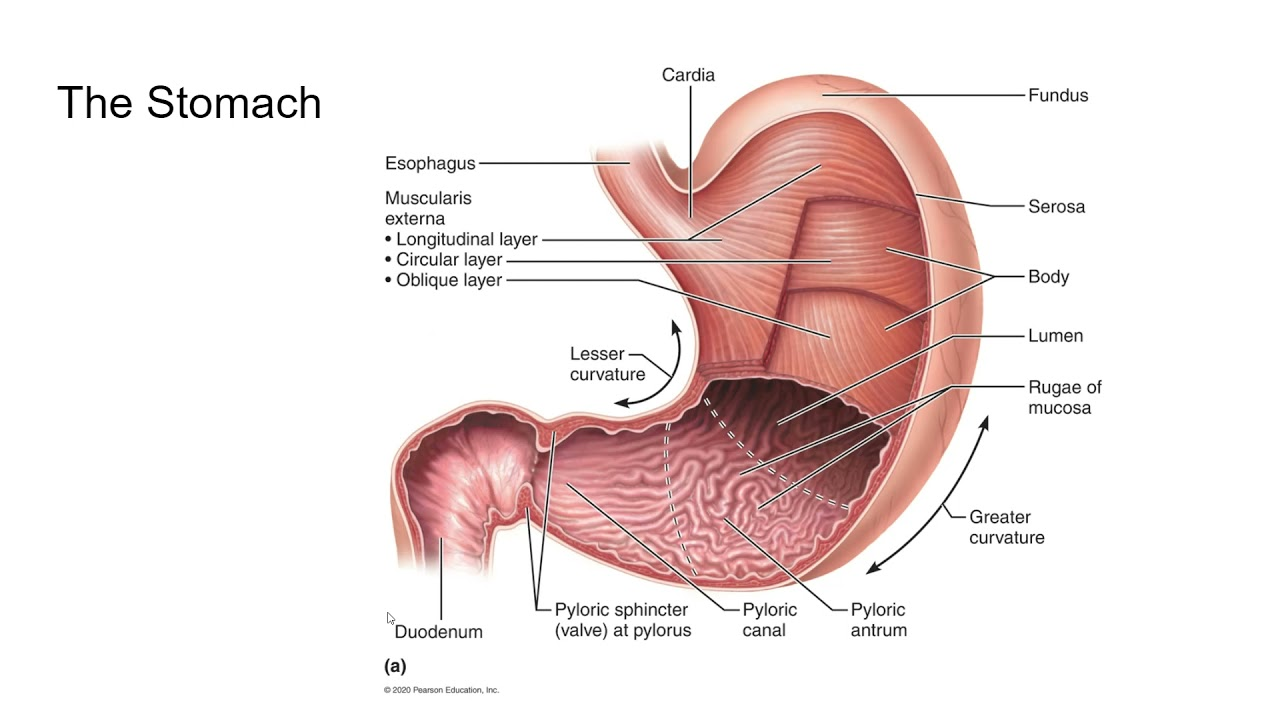CST Certification Prep Questions
1/1398
There's no tags or description
Looks like no tags are added yet.
Name | Mastery | Learn | Test | Matching | Spaced |
|---|
No study sessions yet.
1399 Terms
Growth in the length of a long bone occurs at the
A. diaphysis.
B. medullary canal.
C. epiphyseal plate.
D. articular cartilage.
C. epiphyseal plate
Which of the following tags indicates the least critical of patients in a triage situation?
A. yellow
B. black
C. red
D. green
D. green
Which of the following instruments is used in otorhinolaryngology surgery?
A. Heaney
B. Baron
C. Doyen
D. Poole
B. Baron ENT Suction Tube
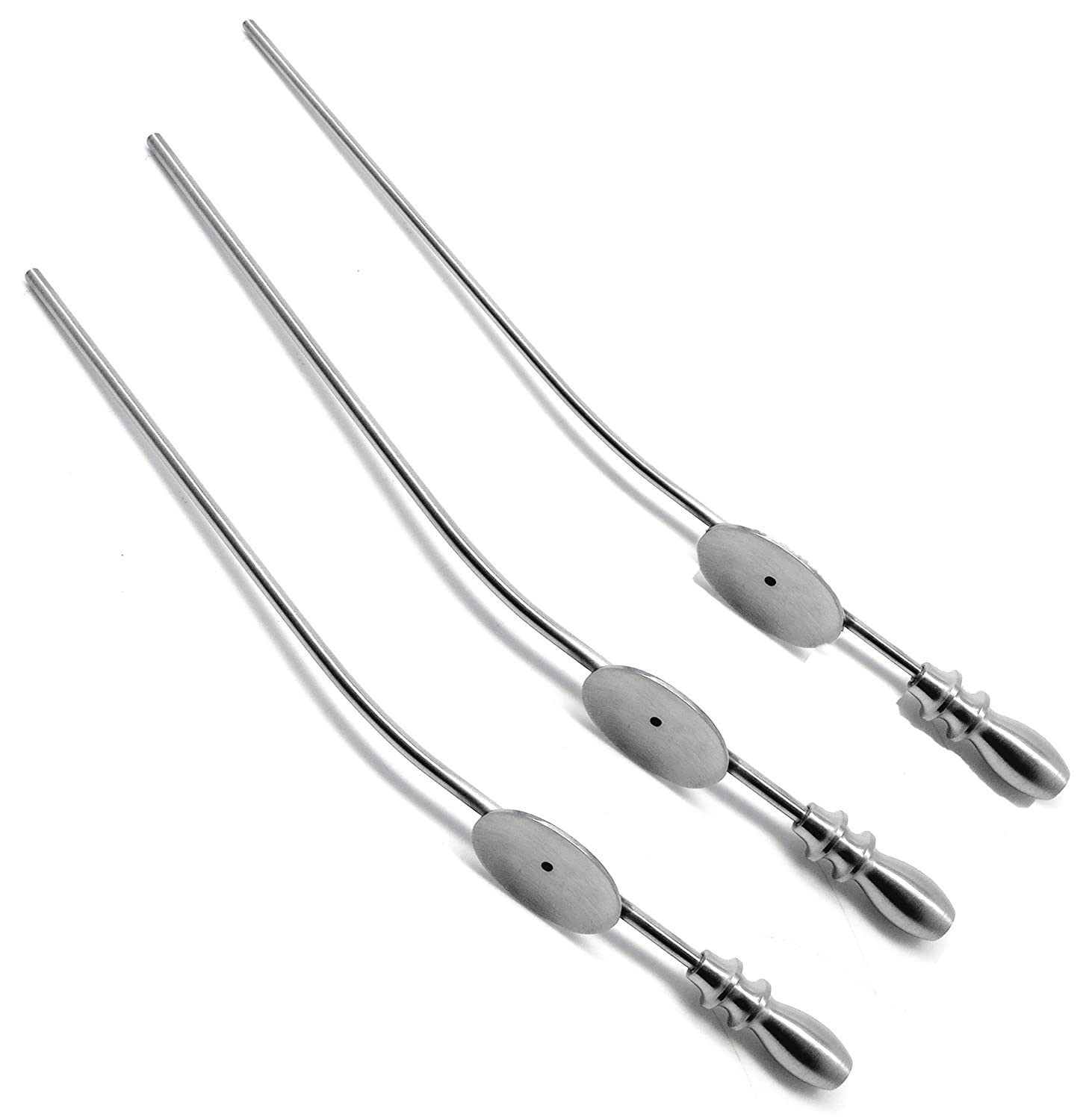
An organization that regulates the production of biological sterilization test packs in-house is
A. CDC.
B. ANSI.
C. AAMI.
D. SDS.
C. AAMI (Association for the Advancement of Medical Instrumentation)
For an open hemicolectomy, a surgical technologist is preparing a second mayo stand for the placement of dirty surgical instruments. Which of the following instruments is MOST likely to be placed on the second mayo stand?
A. Penrose drain
B. Bakes dilator
C. Allis forceps
D. Richardson retractor
C. Allis forceps
Why not the others:
A. Penrose drain – Used for drainage, but not typically part of the bowel resection step.
B. Bakes dilator – Used for CBD (common bile duct) dilation in biliary surgery, not hemicolectomy.
D. Richardson retractor – Used for exposure but doesn’t directly contact bowel lumen contents, so it would remain on the clean Mayo unless contaminated.
A liver laceration is identified during an emergency exploratory laparotomy. A surgical technologist should prepare a suture attached to which of the following types of needles?
A. tapered
B. reverse cutting
C. blunt
D. conventional cutting
C. blunt
Reasoning:
The liver is a friable, vascular, parenchymal organ — meaning it tears easily and bleeds heavily.
Blunt needles are used for suturing friable tissue to reduce the risk of cutting or tearing it further while still passing through the tissue effectively.
Tapered needles are for soft tissue (GI, vascular), cutting needles are for tough tissue (skin), and reverse/conventional cutting would damage liver tissue.
Quick Needle-Tissue Match Tip:
Blunt → Liver, spleen, kidney
Tapered → GI tract, muscle, peritoneum
Reverse Cutting → Skin, fascia
Conventional Cutting → Tough, dense tissue (tends to cut more aggressively)
Which of the following instruments is used to thread a vascular graft from one incision to another?
A. hemostat
B. tunneler
C. DeBakey vascular forceps
D. Randall Stone forceps
B. tunneler
Which of the following is the name of the avascular strip of tissue at the midline which runs from the xiphoid process to the pubis?
A. linea semilunaris
B. linea alba
C. arcuate line
D. midaxillary line
B. linea alba
A patient is in the supine position for a procedure. After the arms are placed on arm boards, padding is placed under the elbows to decrease pressure on which of the following nerves?
A. brachial
B. ulnar
C. axillary
D. median
B. ulnar
The FIRST sign of malignant hyperthermia is
A. muscle twitching.
B. change in blood pressure.
C. unexplained tachycardia.
D. hemorrhage.
C. unexplained tachycardia.
Prior to the closure of an arteriotomy, which of the following solutions should the surgical technologist have ready for irrigation of the operative site?
A. lactated Ringer's
B. protamine sulfate
C. sterile water
D. heparinized saline
D. heparinized saline
Herniation of the rectum through a weakened posterior vaginal wall is known as
A. a rectocele.
B. a cystocele.
C. a varicocele.
D. an enterocele.
A. a rectocele.
If a surgeon requests Gelfoam soaked with thrombin, the method to maintain hemostasis is
A. thermal.
B. mechanical.
C. chemical.
D. electrical.
C. chemical.
Immediately before a hemorrhoidectomy, which of the following procedures might be performed on the patient in the OR?
A. cystoscopy
B. culdoscopy
C. proctoscopy
D. laparoscopy
C. proctoscopy
During which of the following phases of infection do pathogens actively replicate, but the host shows no symptoms?
A. convalescence
B. prodromal phase
C. acute phase
D. incubation
D. incubation
Which of the following conditions should be treated FIRST?
A. obstructed airway
B. closed cerebral injury
C. shock due to hemorrhage
D. sucking chest wound
A. obstructed airway
Which of the following is a tonsillolith?
A. a stone within the tonsil
B. inflammation within the tonsil
C. removal of the tonsil
D. an abscess of the tonsil
A. a stone within the tonsil
Which of the following should be the MINIMUM exposure time in an immediate use sterilizer for unwrapped instruments?
A. 1 minute
B. 3 minutes
C. 5 minutes
D. 7 minutes
B. 3 minutes
The anesthesia care provider (ACP) is gathering supplies to initiate a Bier block for the surgical patient. Which of the following items does the surgical technologist give to the ACP to assist in displacing the blood?
A. pneumatic tourniquet
B. stockinette
C. Esmarch bandage
D. Coban
C. Esmarch bandage
Explanation:
An Esmarch bandage is an elastic, rubber bandage used to exsanguinate (displace blood from) the limb prior to inflation of the pneumatic tourniquet during a Bier block.
It’s wrapped tightly from distal to proximal to push blood out of the limb.
Then the tourniquet is inflated to maintain a bloodless field for regional anesthesia.
Why not the others:
A. Pneumatic tourniquet: Inflates to stop blood flow but does not displace blood.
B. Stockinette: Covers the limb for protection, no role in blood displacement.
D. Coban: Self-adherent wrap, used for compression or securing dressings, not for exsanguination.
Which of the following hormones regulates urine concentration based on reabsorption?
A. ADH
B. PTH
C. ANP
D. GFR
A. ADH
In the break room, a precepting surgical technologist is overheard discussing a student's lack of instrument knowledge. The precepting surgical technologist just committed
A. tort.
B. libel.
C. malpractice.
D. slander.
d. Slander
Prions are unique from other infectious agents because they lack which of the following?
A. cytoplasm
B. nucleus
C. DNA
D. cell membrane
C. DNA
In metastatic cancer, which of the following systems allows for tumors to extend beyond the regional area?
A. skeletal
B. lymphatic
C. endocrine
D. respiratory
B. lymphatic
For which of the following procedures is Gelfoam MOST commonly used?
A.TVH
B. cataract extraction
C. TURP
D. myringotomy
D. myringotomy
Explanation: Gelfoam, a type of absorbable gelatin sponge, is frequently employed in myringotomy procedures to provide support for tympanic membrane grafts and ossicular chain repairs, as well as to promote hemostasis within the middle ear.
Which of the following is the receiving nerve end of all transmission?
A. cell body
B. dendrite
C. axon
D. trigger zone
B. dendrite
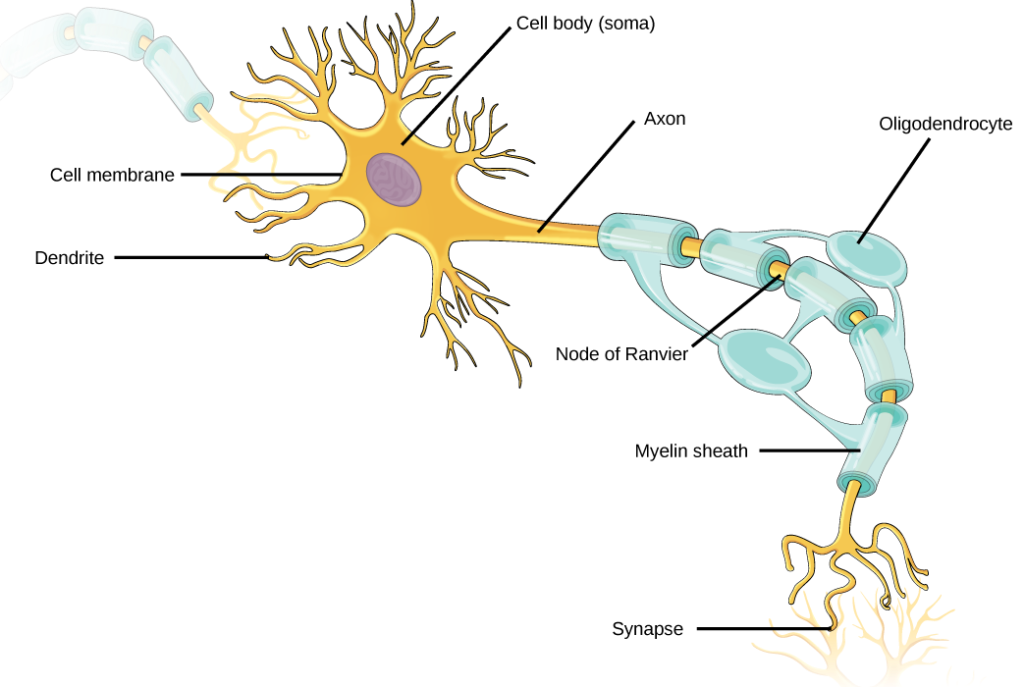
A surgical "time out" must be performed prior to
A. leaving the pre-op holding area.
B. making the initial incision.
C. placing the grounding pad.
D. intubating the patient.
B. making the initial incision.
The opening in the occipital bone which the spinal cord passes through is the foramen
A. of Monro.
B. magnum.
C. rotundum.
D. Bochdalek.
B. Magnum
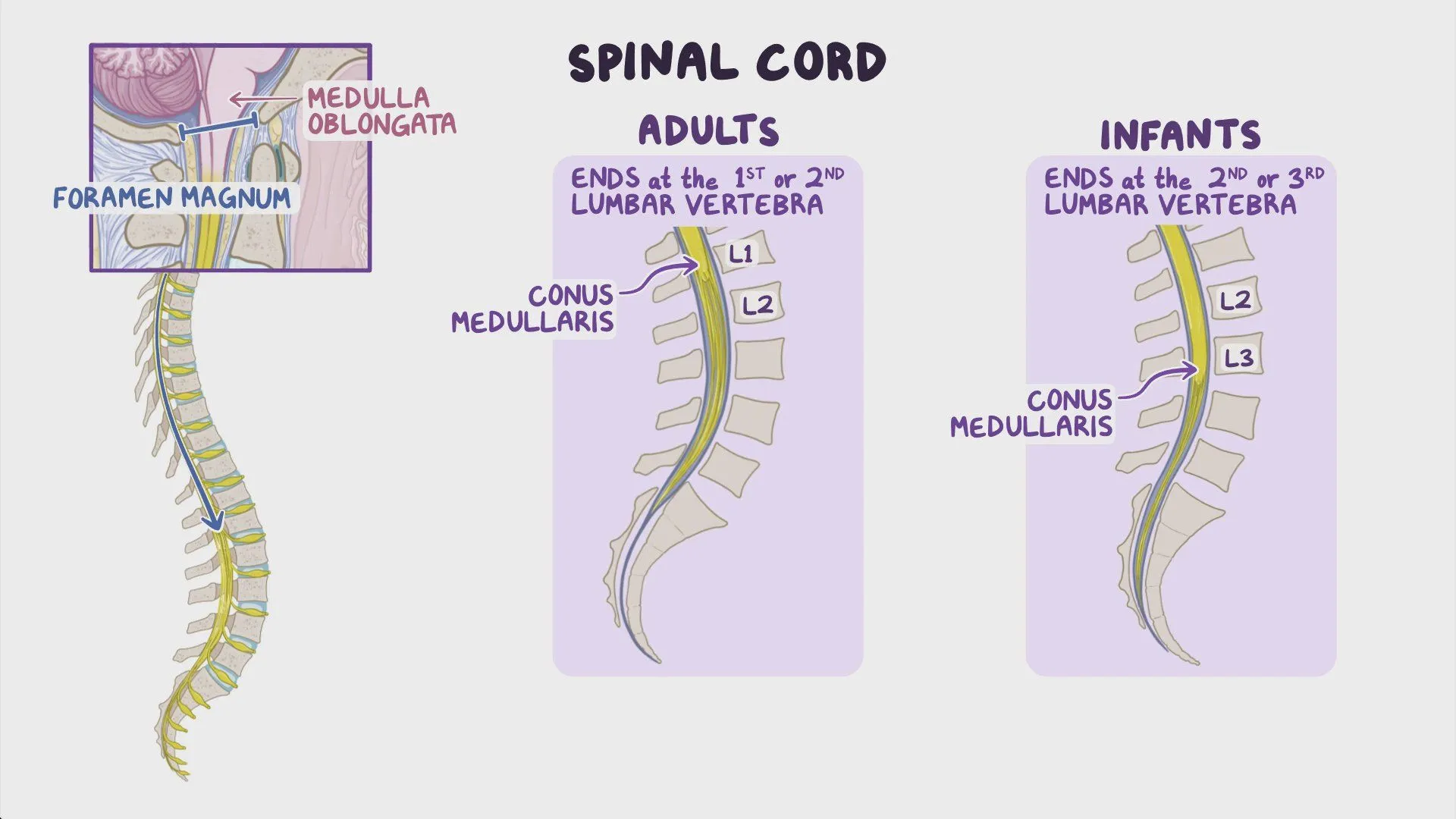
When steam comes into an autoclave from an outside source, the steam is heated in the
A. vacuum system.
B. chamber.
C. thermostatic trap.
D. Jacket.
D. Jacket
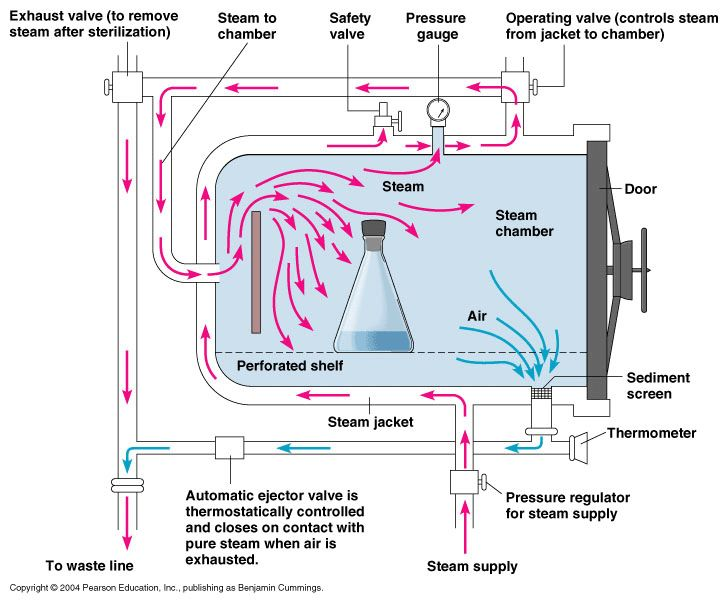
Which of the following wound classes is assigned to a surgery in which the bowel was accidently perforated during the procedure?
A. I
B. II
C. III
D. IV
C. III
Explanation:
Class III wounds are "contaminated" wounds.
This includes operations with major breaks in sterile technique, gross spillage from the gastrointestinal tract, or fresh traumatic wounds.
An accidental bowel perforation during surgery causes spillage of bowel contents, leading to contamination.
Wound class overview:
Class I (Clean): No infection, no entry into respiratory/GI/GU tracts.
Class II (Clean-Contaminated): Controlled entry into GI, respiratory, or GU tracts without unusual contamination.
Class III (Contaminated): Major spillage or break in sterile technique, traumatic wounds <4 hours old.
Class IV (Dirty/Infected): Old traumatic wounds >4 hours, existing infection, perforated viscera with pus.
During a laparoscopic appendectomy, which of the following types of staplers should the surgical technologist have ready on the back table for removing the appendix and ensuring no spillage of bowel content?
A. intraluminal
B. linear
C. skin
D. purse-string
B. linear
Explanation:
During a laparoscopic appendectomy, a linear stapler (also called a gastrointestinal or GI stapler) is commonly used to transect and seal the base of the appendix and the mesoappendix.
It places rows of staples on either side of the cut, preventing spillage of bowel contents and providing secure closure.
Intraluminal staplers are used inside the lumen (e.g., GI anastomosis), not typically for appendectomy.
Skin staplers are for skin closure only.
Purse-string sutures can be used in open appendectomy but are less common in laparoscopic procedures.
During a transurethral resection of the prostate, bleeding is controlled by
A. Gelfoam.
B. irrigation.
C. cauterization.
D. suture ligature.
C. cauterization.
Which of the following is the name of the biological indicator used for hydrogen peroxide gas plasma?
A. Geobacillus stearothermophilus
B. Bacillus atrophaeus
C. Staphylococcus aureus
D. Escherichia coli
B. Bacillus atrophaeus
Which of the following is MOST likely to be used when applying a sterile dressing to a skin graft recipient site?
A. bolster
B. ABD pad
C. 4x4s
D. Steri-Strips
A. bolster
Which of the following surgical instruments will a surgeon use in dissection of a breast tumor?
A. Potts scissors
B. electrosurgical unit
C. Metzenbaum scissors
D. #11 blade
C. Metzenbaum scissors
A surgical incision that is sutured together so that the wound edges are in direct contact with one another is referred to as which of the following types of closure?
A. granulation
B. primary intention
C. secondary intention
D. delayed closure
B. primary intention
The anterior chamber of the eye is located between the cornea and the
A. posterior chamber.
B. lens.
C. pupil.
D. iris.
D. iris.
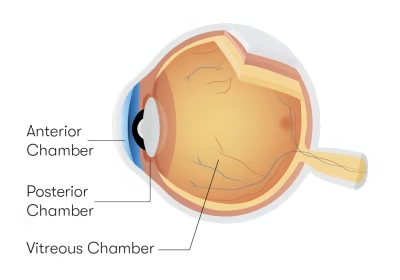
After completion of a procedure, the nurse notices that the arms were extended beyond 90 degrees. This may have caused injury to the
A. brachial plexus.
B. humeral head.
C. femoral nerve.
D. supraspinatus.
A. brachial plexus.
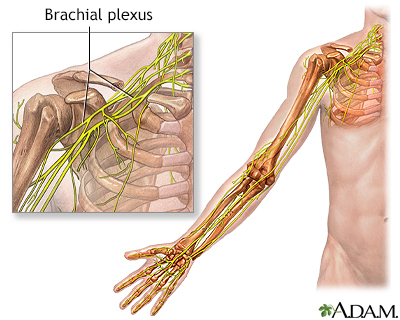
Which of the following types of connective tissue fastens muscle to bone?
A. cartilage
B. ligament
C. synovium
D. tendon
D. tendon
What does the acronym TM stand for in otorhinolaryngology surgery?
A. tympanic membrane
B. transurethral meatus
C. total myomectomy
D. total metastasis
A. tympanic membrane
A surgeon requests a patient to be placed into the lithotomy position for the surgical procedure. Which of the following positioning devices must be obtained?
A. leg stirrups
B. chest rolls
C. bean bags
D. axillary rolls
A. leg stirrups
When using a laparoscopic set-up, potential hazards associated with the equipment include
A. non-ionizing radiation.
B. nitrogen embolus.
C. pneumoperitoneum.
D. fiberoptic beam fire.
D. fiberoptic beam fire.
When performing a parotidectomy, which of the following nerves is identified and preserved with the use of a nerve stimulator?
A. facial
B. recurrent laryngeal
C. acoustic
D. vagus
A. facial

During a laparoscopic cholecystectomy, the surgeon determines that the procedure will convert to an open case. Which of the following incisions is preferred for access?
A. subcostal
B. vertical
C. transverse
D. thoracoabdominal
A. subcostal
Which of the following is a heavy, curved, tapered needle?
A. Mayo
B. Keith
C. Ferguson
D. Arterial
A. Mayo
Quick comparison:
Mayo: Heavy, curved, tapered — fascia, muscle (correct here)
Ferguson: Heavy, curved, but usually a cutting needle, less tapered
Keith: Small, sharp, straight or slightly curved — skin
Arterial: Small, sharp — delicate vascular tissue
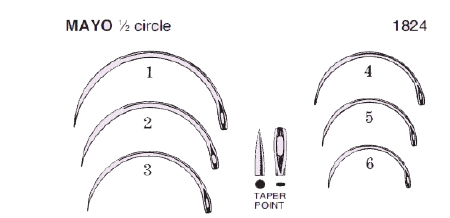
During a procedure, a major piece of equipment malfunctions and causes a patient's death. Which of the following is this situation MOST likely to be classified as?
A. defamation
B. sentinel event
C. malpractice
D. abandonment
B. sentinel event
Which of the following items should be disposed of in an appropriate sharps container?
A. skin rake
B. drill pin
C. damaged instrument
D. arthroscopy trocar
B. drill pin
Which of the following is used to cross-clamp the intestine during a bowel resection?
A. Allen
B. Lahey
C. Heaney
D. Duval
A. Allen
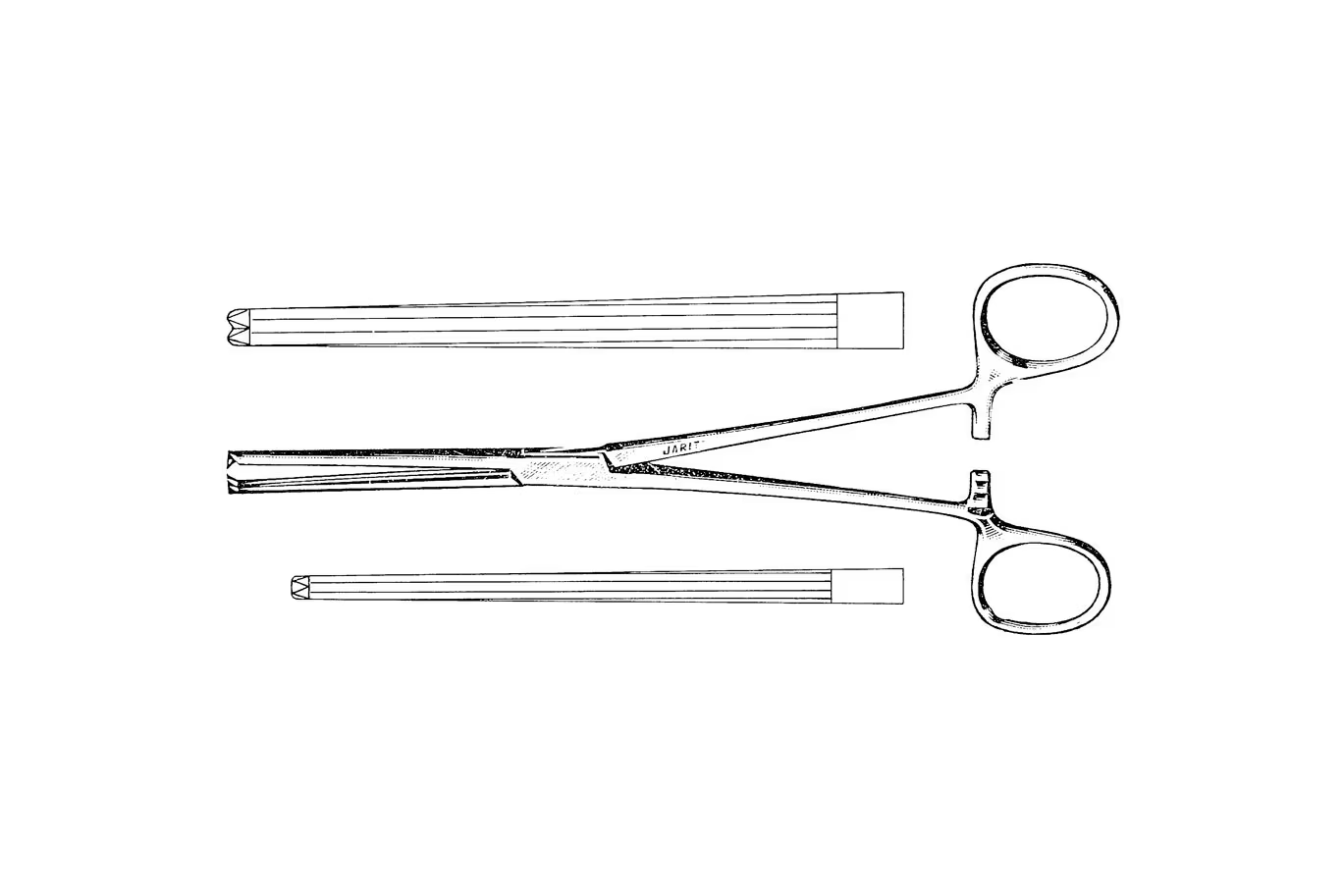
Which of the following should be included on an orthopedic set-up?
A. Smith perforator
B. Potts scissors
C. Key elevator
D. Heaney clamp
C. Key elevator
A surgeon is performing a procedure to repair damage from a gunshot wound to the chest. Which of the following types of drains should the surgical technologist have available at the end of the procedure?
A. passive
B. suction
C. gravity
D. underwater
D. underwater
An underwater drain is used to pull fluid or air from the thoracic cavity after surgery or trauma to the thorax. It is used to restore negative pressure to the thoracic cavity.
A plastic surgeon performs surgery PRIMARILY on which of the following anatomical systems?
A. vascular
B. genitourinary
C. endocrine
D. integumentary
D. integumentary
Which of the following wounds is MOST likely in the inflammatory phase of wound healing?
A. a Bankart repair, one week post-procedure
B. a laparotomy incision with a cicatrix
C. an open reduction internal fixation (ORIF) of a finger, two weeks post-procedure
D. an abdominal incision, 20 minutes post-closure
D. an abdominal incision, 20 minutes post-closure
A surgeon repeatedly asks the surgical technologist to refill the 10 cc syringe with local anesthetic. If the surgical technologist refilled the syringe three times and there was 5 cc left in the syringe, how much anesthetic was used?
A. 15
B. 25
C. 30
D. 35
D. 35
At the conclusion of a surgical case, how should the surgical technologist aid in reducing bioburden on instruments as the FIRST step in the sterilization cycle?
A. hand cleaning
B. disinfection
C. sorting
D. sterilization
A. hand cleaning
Which of the following instruments may be used to extend the arteriotomy during carotid endarterectomy?
A. Mayo
B. Potts
C. Jorgenson
D. Stevens
B. Potts
Which of the following test monitors indicate if there is any residual air in the sterilization chamber?
A. Bowie-Dick test
B. heat-sensitive pellet
C. chemical indicator tape
D. multi-parameter chemical indicator
A. Bowie-Dick test
Which of the following instruments is used to grasp the base of the hemorrhoid during a hemorrhoidectomy?
A. Allis
B. Pennington
C. Kocher
D. mosquito
A. Allis
he surgical incision that allows for the BEST visualization for a Billroth I procedure is
A. McBurney's.
B. Pfannenstiel.
C. midline.
D. subcostal.
C. midline.

During an open repair of an indirect hernia, which of the following drains should a surgical technologist have available to pass the surgeon once the spermatic cord has been dissected?
A. Malecot
B. T-tube
C. Jackson-Pratt
D. Penrose
D. Penrose
Explanation:
During an open repair of an indirect inguinal hernia, the spermatic cord is dissected, and a Penrose drain is commonly placed to prevent fluid accumulation and allow passive drainage.
Penrose drains are soft, flexible, and flat, ideal for superficial wounds and spaces like the inguinal canal.
Why not the others:
A. Malecot: Used mainly for nephrostomy or bladder drainage (tapered, winged tip).
B. T-tube: Used in biliary surgery for common bile duct drainage.
C. Jackson-Pratt: Closed suction drain, less commonly used in hernia repairs where passive drainage suffices.
During ophthalmic procedures, the surgeon will use which of the following paralytic agents to dilate the pupil?
A. cycloplegics
B. miotics
C. viscoelastic
D. BSS
A. cycloplegics
Which of the following is a benign fluid-filled sac that develops in the anterior testis?
A. rectocele
B. cystocele
C. enterocele
D. hydrocele
D. hydrocele
Which of the following is considered a contaminated area when evaluating a patient's skin for the preoperative prep?
A. groin
B. toes
C. body hair
D. draining sinus
D. draining sinus
Explanation:
A draining sinus is an open, infected wound or tract that discharges pus or other fluids, making it a contaminated area during skin prep.
Such areas have a high bacterial load and require special attention or exclusion from the sterile field to prevent infection.
Why not the others:
A. Groin: Considered a clean-contaminated area, but not outright contaminated.
B. Toes: Also considered clean-contaminated due to sweat and minor flora, but not classified as contaminated.
C. Body hair: Not a contaminated area; hair itself is not a source of contamination, though it may trap bacteria.
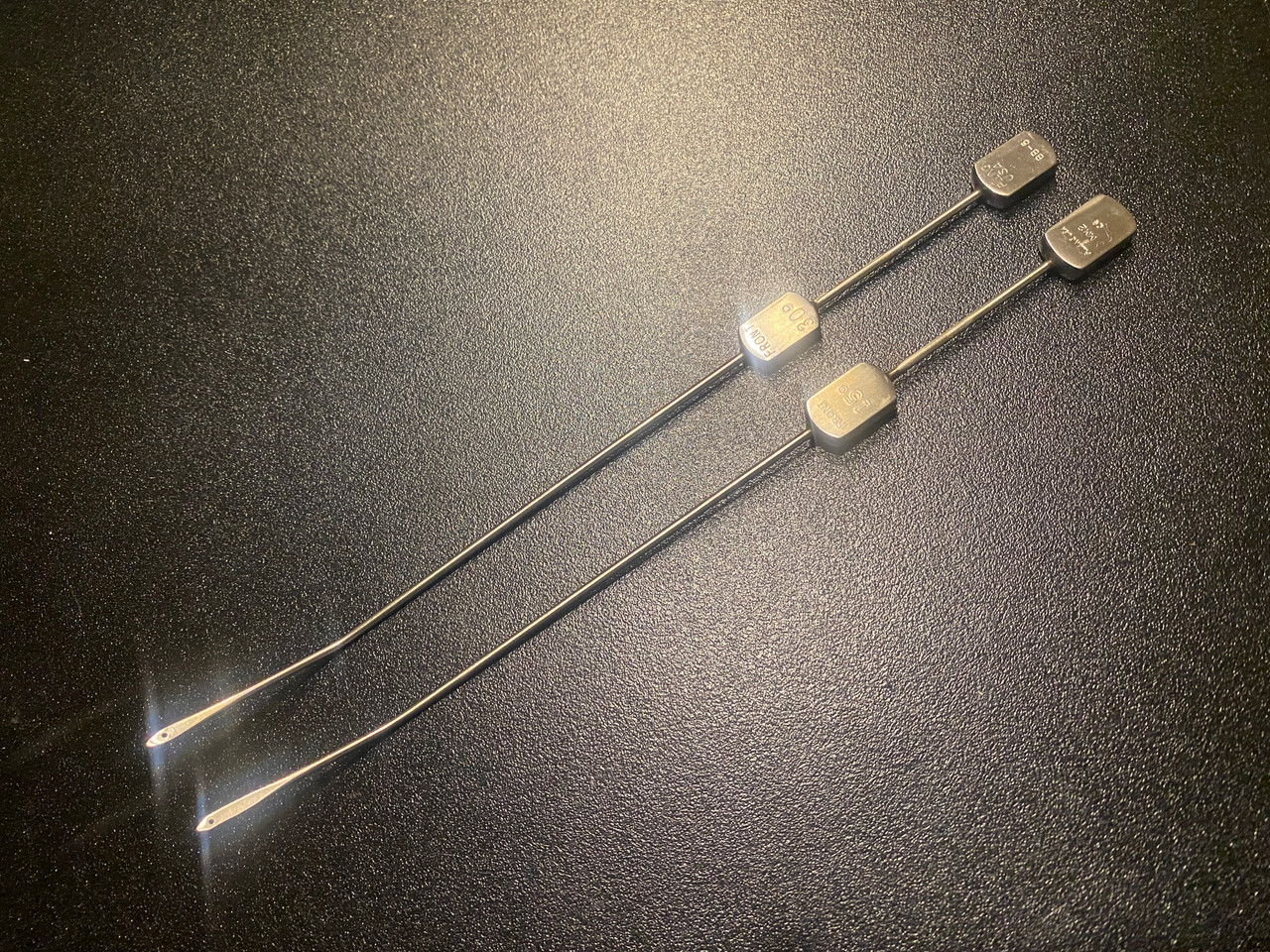
A Stamey needle is used for which of the following types of surgery?
A. hysterectomy
B. prostatectomy
C. bladder suspension
D. anterior colporrhaphy
C. bladder suspension

Which of the following scissors is MOST likely found in a basic hysterectomy set-up?
A. Potts-Smith
B. Stevens
C. Jorgenson
D. Iris
C. Jorgenson
Which of the following supplies is part of the standard set-up for a diagnostic knee arthroscopy?
A. Poole suction tip
B. inflow tubing
C. #20 blade
D. 3000 mL bag of glycine
B. inflow tubing
Explanation:
During a diagnostic knee arthroscopy, the joint is distended with sterile fluid to improve visualization.
Inflow tubing is used to deliver sterile saline or lactated Ringer’s solution into the joint space.
This fluid helps expand the joint and clear debris or blood for better viewing.
Which of the following is MOST commonly used for wound closure in the presence of infection?
A. stainless steel
B. polyglactin-910
C. plain gut
D. silk
A. stainless steel
Four people are needed to transfer a patient to the stretcher. Who gives direction for this move?
A. surgeon
B. surgical technologist
C. circulator
D. anesthesiologist
D. anesthesiologist
Which of the following retractors should the surgical technologist have available to provide exposure to the patellar tendon while harvesting the graft for an ACL repair?
A. Senn
B. Richardson
C. Hayes
D. Fukuda
A. Senn
After a surgical procedure, infectious waste is separated from all other waste and placed in
A. yellow plastic bags.
B. biohazard bags.
C. plastic trash bags.
D. an impenetrable hard container.
B. biohazard bags.
During dissection of the cystic duct and artery in an open cholecystectomy, which of the following instruments is necessary?
A. Ochsner forceps
B. Jennings retractor
C. Mixter clamp
D. O'Sullivan-O'Connor retractor
C. Mixter clamp
Explanation:
The Mixter clamp (right-angle clamp) is essential for dissecting and isolating tubular structures like the cystic duct and artery during an open cholecystectomy.
Its angled tip allows the surgeon to pass around vessels or ducts safely for ligation or division.
Why not the others:
A. Ochsner forceps: Used for grasping tough tissue or large vessels, but not specifically for dissecting ducts.
B. Jennings retractor: Small handheld retractor, mainly for superficial or small incisions, not deep dissection.
D. O'Sullivan-O'Connor retractor: Large self-retaining abdominal retractor, used for exposure, not for fine dissection.
The MINIMUM number of surgical team members required to transfer an anesthetized patient from the OR table to the gurney is
A. one.
B. two.
C. three.
D. four.
D. four.
A surgeon received a report from PACU that a patient is bleeding at the surgical site after a lumbar laminectomy procedure. Upon inspection, the surgeon deems it necessary to return the patient to the OR to correct the issue. Which of the following should the surgeon suspect to occur if the issue is not resolved immediately?
A. dehiscence
B. hematoma
C. evisceration
D. adhesion
B. hematoma
Explanation:
Postoperative bleeding after a lumbar laminectomy can lead to the formation of a hematoma — a collection of blood outside blood vessels at the surgical site.
A hematoma in the spinal area can cause pressure on nerves or the spinal cord, leading to neurological deficits, pain, or even paralysis if not promptly treated.
This is why immediate return to the OR is critical to evacuate the hematoma and control bleeding.
Why not the others:
A. Dehiscence: Separation of a surgical wound, usually a later complication.
C. Evisceration: Protrusion of internal organs through a wound, rare in spinal surgery.
D. Adhesion: Scar tissue forming between tissues/organs, a long-term complication, not immediate bleeding.
For a patient with suspected cancer, the MOST important preoperative plan involves the
A. sponges.
B. sutures.
C. drapes.
D. specimens.
D. specimens.
Factors that contribute to SSI include
A. wearing proper PPE.
B. using aseptic technique.
C. immunosuppression.
D. portal hypertension.
C. immunosuppression.
Which of the following is the MOST effective method for reprocessing endoscopes used during a colonoscopy?
A. gravity displacement sterilizer
B. ethylene oxide
C. cobalt-60 radiation
D. glutaraldehyde
D. glutaraldehyde
When a cholecystectomy is performed, which of the following anatomical structures must be preserved?
A. cystic duct
B. cystic vein
C. common duct
D. cystic artery
C. common duct
A stockinette is used in draping for
A. an abdominal procedure.
B. a cranial procedure.
C. a perineal procedure.
D. an extremity procedure.
D. an extremity procedure.
In which of the following positions is a patient placed for a right nephrectomy?
A. left lateral
B. right lateral
C. left lateral kidney
D. right lateral kidney
C. left lateral kidney
At the end of a posterior capsulectomy, a surgeon is having difficulty closing the sclerotomies. Which medication should the surgeon request?
A. Viscoat
B. Hyaluronidase
C. Prednisolone
D. Mannitol
D. Mannitol
Explanation:
During posterior capsulectomy or other intraocular surgeries, Mannitol is used as an osmotic diuretic to reduce intraocular pressure (IOP) by drawing fluid out of the eye.
Lowering IOP can help relax the globe, making it easier for the surgeon to manipulate and close the sclerotomies.
It’s often given intravenously when the eye is tense or difficult to handle during or after surgery.
Why not the others?
Viscoat: Protective viscoelastic inside the eye, not for IOP control.
Hyaluronidase: Helps tissue permeability but not effective for lowering IOP or globe relaxation.
Prednisolone: Anti-inflammatory, no immediate mechanical effect on closure.
The vermiform appendix originates from the
A. cecum.
B. ileum.
C. sigmoid colon.
D. ascending colon.
A. cecum.
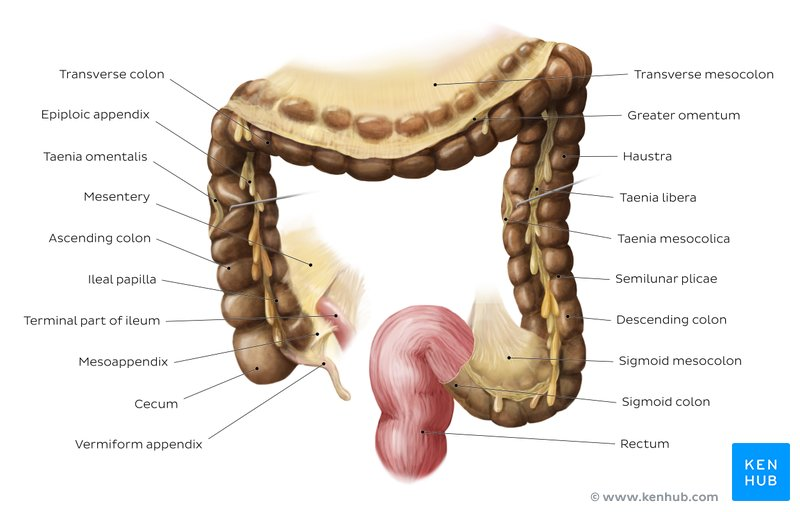
Which of the following positions is used for a total hip arthroplasty?
A. Fowler
B. lithotomy
C. Kraske
D. lateral
D. lateral
Which of the following is the name of the incision made in a simple open nephrectomy?
A. Gibson
B. low transverse
C. subcostal flank
D. McBurney's
C. subcostal flank
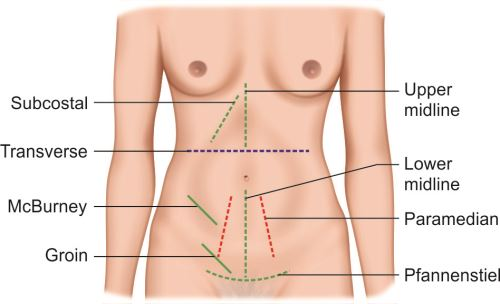
The FIRST step in instrument cleaning and decontamination begins at the
A. decontamination area.
B. ultrasonic washer.
C. sterile field.
D. sub sterile room.
C. sterile field.
A proper informed consent should include the
A. surgeon's name.
B. patient's blood type.
C. known allergies.
D. next of kin information.
A. surgeon's name.
Which of the following is a preferred retractor for a groin incision?
A. Weitlaner
B. Finochietto
C. Charnley
D. Balfour
A. Weitlaner
Which of the following rongeurs is used to expand the antrostomy in a Caldwell-Luc procedure?
A. Cushing
B. Bethune
C. Kerrison
D. Stille-Luer
C. Kerrison
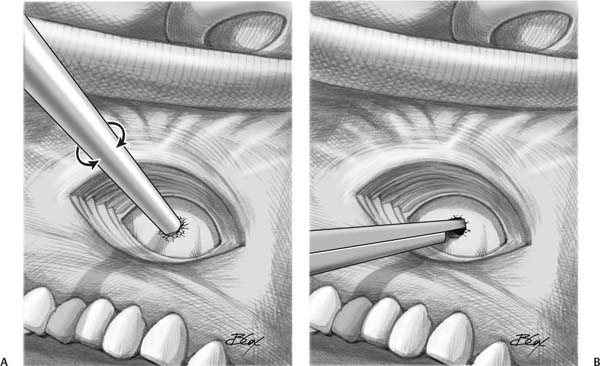
When holding a suction wand 1 cm from the surgical site, what is the approximate percentage of surgical plume is effectively evacuated?
A. 68%
B. 78%
C. 88%
D. 98%
D. 98%
When infection is present, the MOST commonly used suture is
A. braided.
B. silk.
C. surgical gut.
D. monofilament.
D. monofilament.
A patient having recently undergone a laparoscopic cholecystectomy has been transferred to the PACU. The patient becomes tachycardic and the nurse reports a rise in core body temperature. The nurse attempts to communicate with the patient and notices that the patient's muscles are very rigid. The nurse notifies the surgical team. The surgical technologist should recognize these as signs of
A. malignant hyperthermia.
B. cardiac arrest.
C. pulmonary embolism.
D. hypokalemia.
A. malignant hyperthermia.
When preparing surgical specimens, in addition to the surgical technologist, who else is responsible for accurately labeling the specimen?
A. surgeon and anesthesiologist
B. circulating nurse and first assistant
C. anesthesiologist and first assistant
D. surgeon and circulating nurse
D. surgeon and circulating nurse
Surgeon will state the specimen before handing to the CST
The circulator will be labeling the specimen off the sterile field
When exposed to ionizing radiation, staff and patients should wear personal protective equipment containing
A. silicone.
B. lead.
C. steel.
D. rubber.
B. lead.
Which of the following structures is located in the alveolar processes?
A. Teeth
B. Sinuses
C. Tonsils
D. Villi
A. Teeth
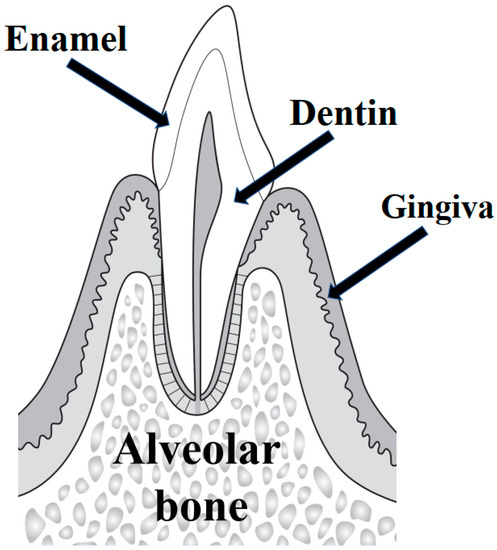
The enzyme used to soften the zonules of the lens before cataract surgery is:
a. Atropine sulfate
b. Alpha-chymotrypsin
c. Acetylcholine chloride
d. Pilocarpine hydrochloride
b. Alpha-chymotrypsin
Explanation:
Alpha-chymotrypsin is an enzyme used during cataract surgery to soften and lyse the zonular fibers (zonules of Zinn), which hold the lens in place.
This facilitates lens removal by relaxing these fibers and allowing easier manipulation.
Why not the others:
Atropine sulfate: A mydriatic agent used to dilate the pupil, not an enzyme.
Acetylcholine chloride: Used to constrict the pupil (miotic agent), not for softening zonules.
Pilocarpine hydrochloride: Another miotic agent, not an enzyme.
When perforated metal trays are placed on the shelves of the steam sterilizing cart, they should be positioned:
A. Flat
B. Upside down
C. Vertical
D. Angled
A. Flat
How should the stretcher be oriented when necessary to use an elevator to transport a patient to the OR?
A. Place stretcher sideways in elevator
B. Enter head first, exit feet first
C. Position in elevator is irrelevant
D. Enter feet first, exit head first
B. Enter head first, exit feet first
Which of the following is a curved, transverse incision across the lower abdomen frequently used in gynecological surgery?
Midline
Paramedian
McBurney's
Pfannenstiel
Pfannenstiel
Hyperkalemia is a high concentration of:
Calcium
Nitrogen
Potassium
Albumin
Potassium
**Hypercalcemia is high calcium
Permission for treatment given with full knowledge of the risks is a/an:
A. Tort
B. Malpractice
C. Personal liability
D. Informed consent
D. Informed consent
Which of the following tissues are cut using curved Mayo scissors?
A. Fascia
B. Periosteum
C. Dura mater
D. Arterial wall
A. Fascia
Which laser beam can travel through clear tissues without heating them?
Argon
Excimer
Carbon dioxide
Neodymium: YAG
Argon
Which portion of the stomach surrounds the lower esophageal sphincter?
Cardia
Fundus
Pylorus
Antrum
Cardia
